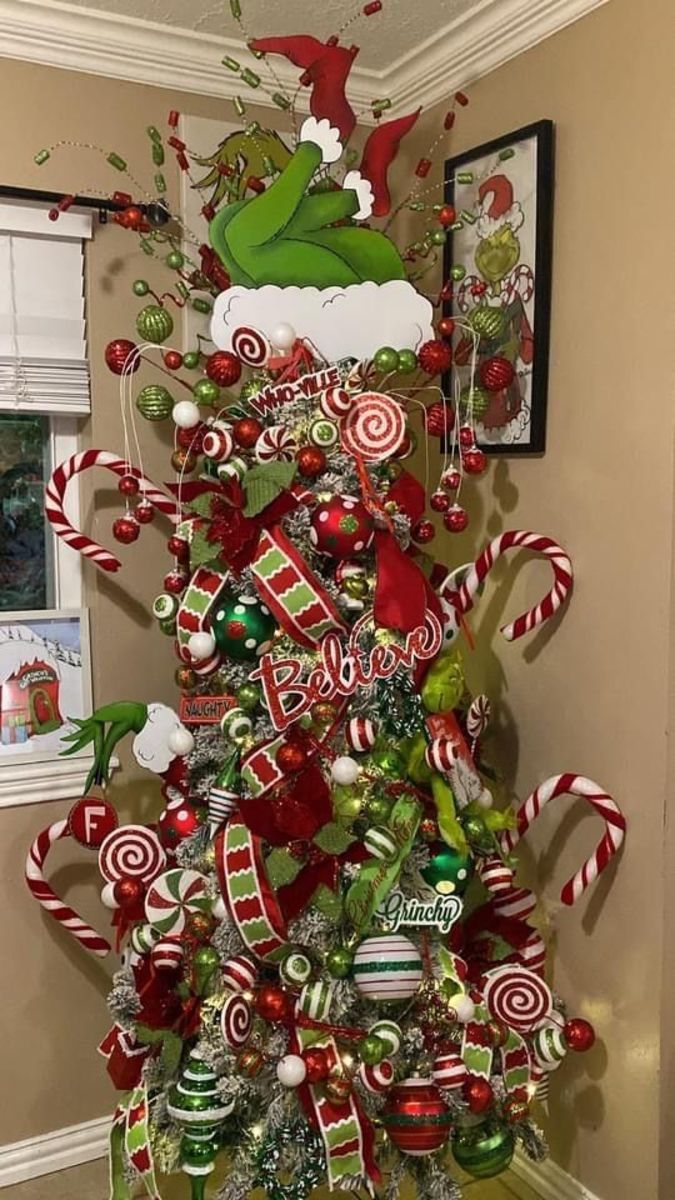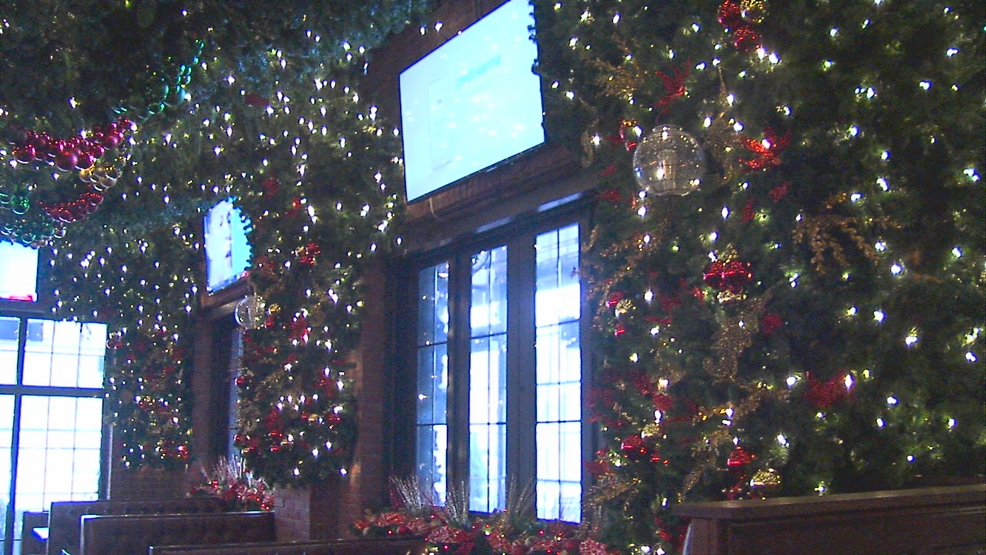Unveiling the Tradition: Why We Decorate Christmas Trees

Every year, as winter blankets the world in its chilly embrace, millions of households indulge in a timeless tradition: the decorating of the Christmas tree. This festive practice, filled with twinkling lights, glistening ornaments, and the scent of fresh pine, goes far beyond mere holiday decor. It's a ritual steeped in history, folklore, and personal significance that brings together families, fosters warmth in the winter months, and transforms homes into vibrant hubs of holiday cheer. In this exploration, we delve into the origins of this beautiful custom, its evolution over centuries, and the diverse symbols that adorn our trees today.
The Origins of the Christmas Tree Tradition

The tradition of the Christmas tree didn't start with the brightly lit evergreens we see today. Instead, its roots trace back to ancient times:
- Ancient Egypt: Evergreen boughs were used to symbolize life's triumph over death and the hope of rebirth.
- Pre-Christian Germans: The "Yule Tree" was a symbol of the everlasting life with some tribes worshipping trees and decorating them with candles in winter.
- Medieval Europe: "Paradise Trees" in mystery plays signified the Garden of Eden, with apples hung as symbols of the forbidden fruit.
The practice of decorating trees during Christmas gained momentum with the spread of Christianity across Europe, particularly in the 16th century when Christmas trees became more common in homes:
The Spread of the Christmas Tree

- Germany: By the 16th century, the Christmas tree was already a widespread tradition in Germany, with families bringing trees into their homes to decorate.
- Queen Victoria: The practice became iconic when a sketch of Queen Victoria's family around their decorated tree was published in an English magazine. Suddenly, having a Christmas tree was the epitome of holiday fashion.
- Modern Times: From the United States to Australia, the tradition has been adapted and cherished, with electric lights replacing candles for safety, and a myriad of decorations evolving to include personal mementos, handmade ornaments, and cultural symbols.
Symbols and Decorations

The Christmas tree is a canvas for storytelling through its ornaments:
| Symbol | Meaning |
|---|---|
| Star or Angel | Top of the tree, symbolizing the Star of Bethlehem or the announcement of the Nativity. |
| Bells | Announce the good news and the arrival of the holiday season. |
| Ornaments | Originally apples, now symbols of various meanings from wealth to remembrance. |
| Candy Canes | Shepherd's hook and the sweet taste of Christmas joy. |
| Garlands and Ribbons | Indicators of festivity and beauty, often reflecting the circular nature of the year. |

📝 Note: The tradition of the Christmas tree has many variations, so personal significance and cultural adaptations can add unique layers to the practice of decorating.
Each item on a Christmas tree has its own narrative, contributing to a collective tapestry of holiday memories:
- Pickled Ornaments: Hiding a pickle ornament for children to find is a fun tradition in some families.
- Edible Decorations
- Cultural Symbols: From the German Weihnachtspyramide to the Italian Presepe, ornaments can reflect regional customs.
Over time, the symbols and traditions around the tree have evolved, blending the old with the new, local with global:
Christmas Trees Around the World

The spirit of the Christmas tree transcends cultural and geographical boundaries:
- Sweden: Julgran is often topped with a star or an angel, with historical uses of Julbock or Christmas goat instead.
- Mexico: Trees feature a mix of traditional ornaments and vibrant Mexican crafts.
- Philippines: Parols, star-shaped lanterns, often take the place of a traditional tree, reflecting local customs.
- Australia: Given the summer season, the Christmas tree might be accompanied by a nativity scene in warm weather attire.
🌎 Note: Variations in tree decoration practices can be a testament to the diversity of Christmas celebrations worldwide.
These varied expressions demonstrate how the Christmas tree has been embraced and adapted, showcasing both the unity and diversity of Christmas traditions.
The Tradition Today

Today, the Christmas tree is not just a festive display but an interactive experience:
- Technology: LED lights, smart decorations, and even 'tree skirts' that tell stories or play music.
- DIY Crafting: Families often make their own ornaments, adding a personal touch to the tree.
- Charity and Sustainability: The rise in upcycled, eco-friendly, and charity-driven ornaments.
The modern tree has become a reflection of our values, interests, and the times we live in:
- Minimalist Trees: Some opt for a more subdued, elegant approach with white or single-color decorations.
- Interactive Themes: Trees themed around movies, books, or even viral internet trends.
- Augmented Reality: Apps that can turn your tree into a magical forest with animations and games.
The Christmas tree's evolution from a pagan symbol to a modern, family-centric celebration illustrates how traditions can be reinvented:
The conclusion of our journey through the tradition of decorating Christmas trees shows us more than just a decorative practice. It reveals a cultural phenomenon that has adapted, survived, and thrived through centuries. From its ancient roots in various civilizations to its current form in our living rooms, the Christmas tree is a bridge between our past and present, connecting us to our ancestors' hopes and dreams while allowing us to tell our own stories. It fosters a sense of community, creativity, and continuity, reminding us that despite our differences, we share a universal language of joy, celebration, and the wonder of the holiday season. This tradition, with all its twinkling lights and rich symbolism, continues to evolve, ensuring that every year, we come together to not only decorate a tree but also to nurture a legacy of love, memory, and festivity.
What do the different ornaments on a Christmas tree symbolize?

+
Ornaments can symbolize various things. For instance, stars and angels represent the Star of Bethlehem and the announcement of Christ’s birth. Bells signify celebration and joy, while the pickle ornament is part of a fun treasure hunt tradition. Modern ornaments might symbolize hobbies, personal achievements, or family traditions.
How has the tradition of Christmas trees evolved?

+
The tradition has evolved from pagan practices involving evergreens to a Christian symbol of life and hope, especially after the Reformation in Germany. With time, the practice spread, and each culture adapted it. In modern times, the materials, types of decorations, and the involvement of technology have significantly influenced how trees are decorated.
Why do we still decorate Christmas trees today?

+
Decorating Christmas trees continues today because it’s a blend of tradition, festivity, and the joy of creating memories. It’s an activity that unites families, fosters creativity, and offers a moment of reflection on the past year, while also instilling hope for the future. The tree is both a centerpiece of holiday decorations and a repository of personal and cultural significance.


